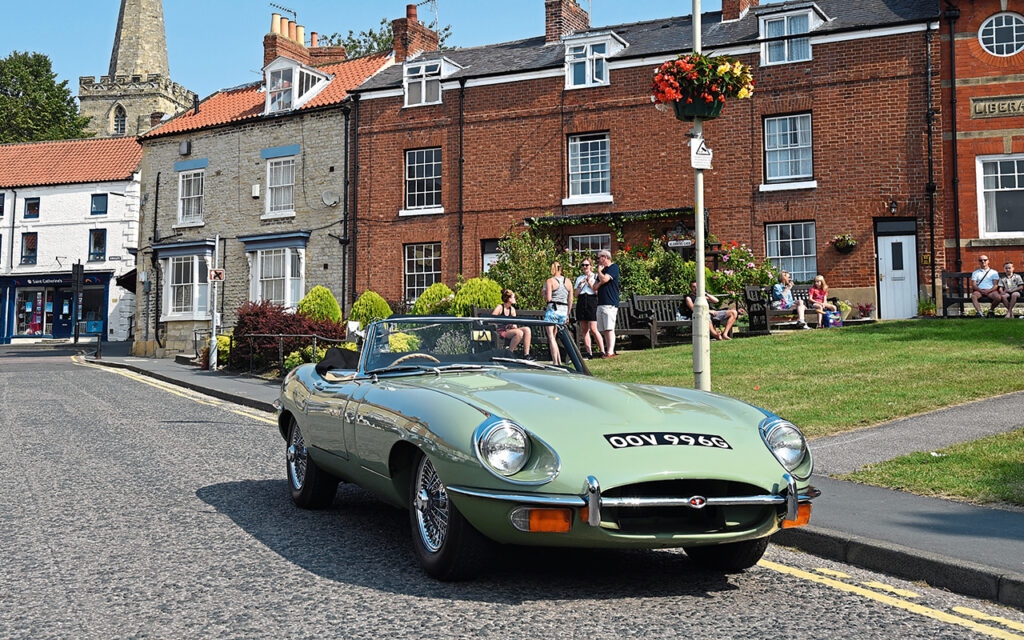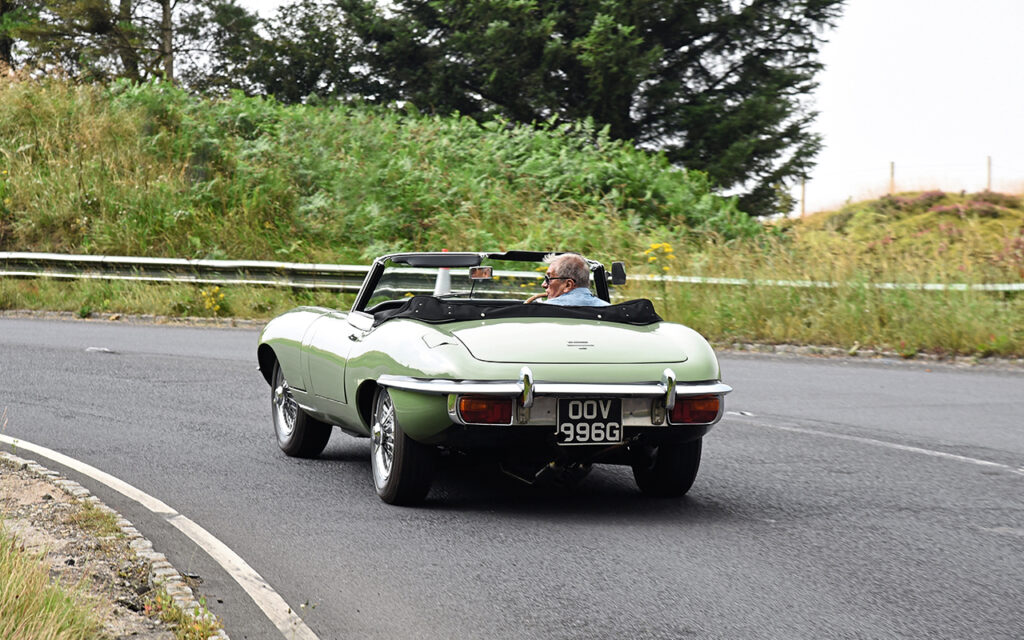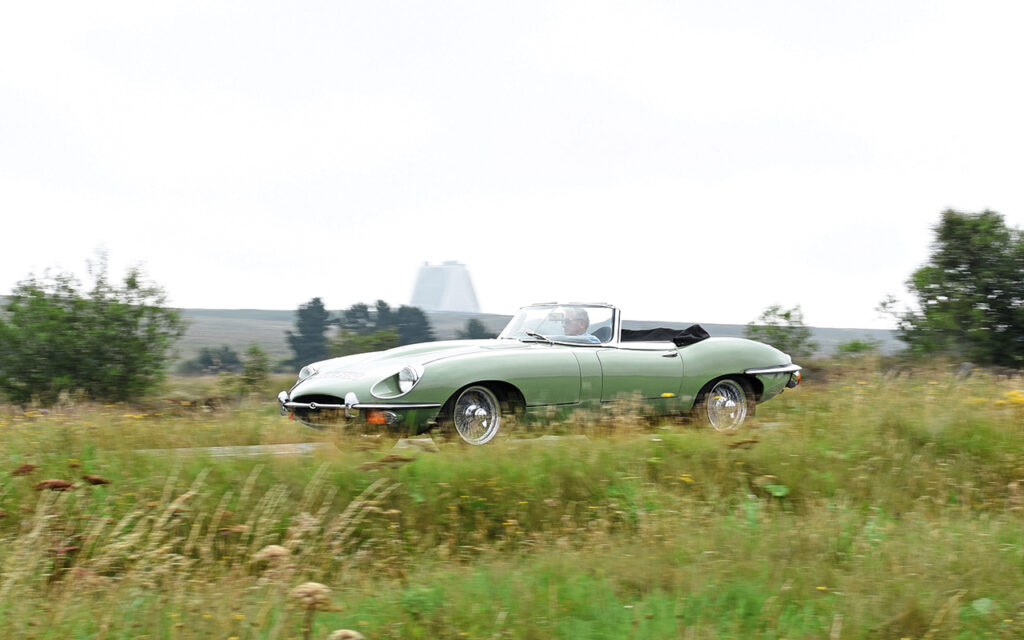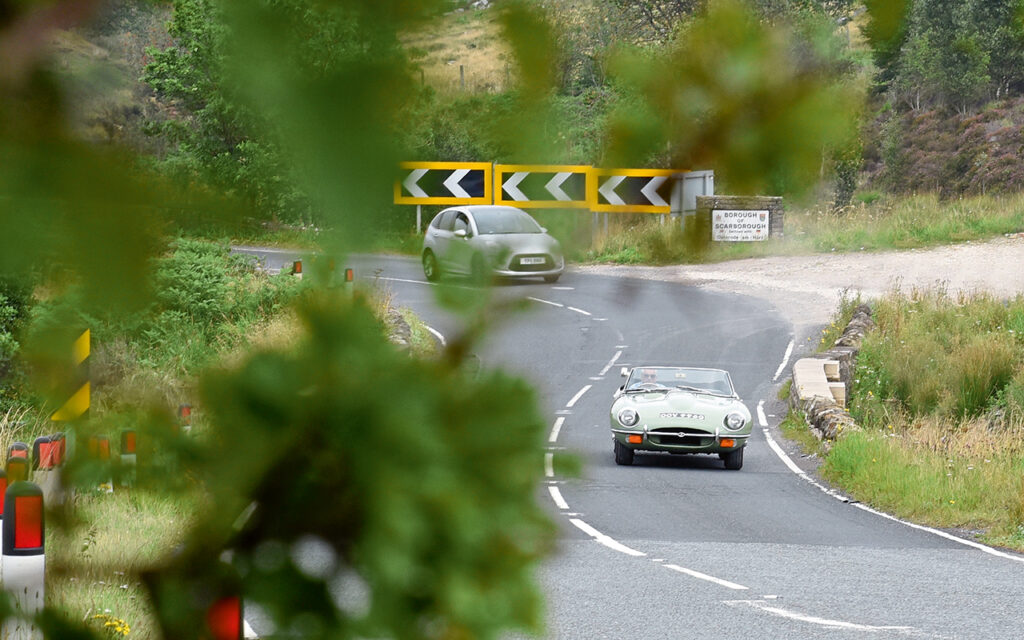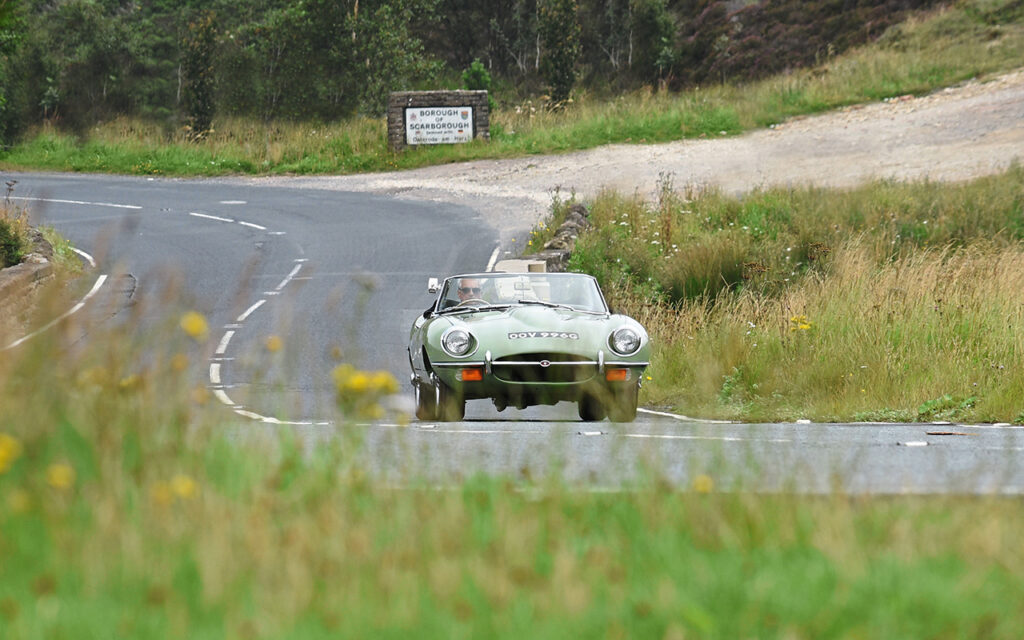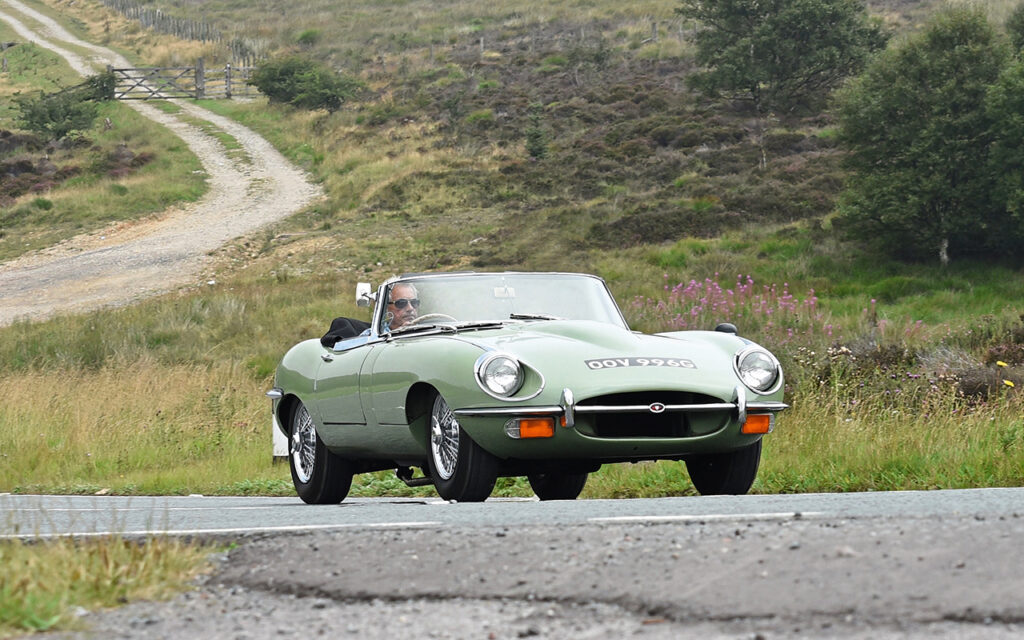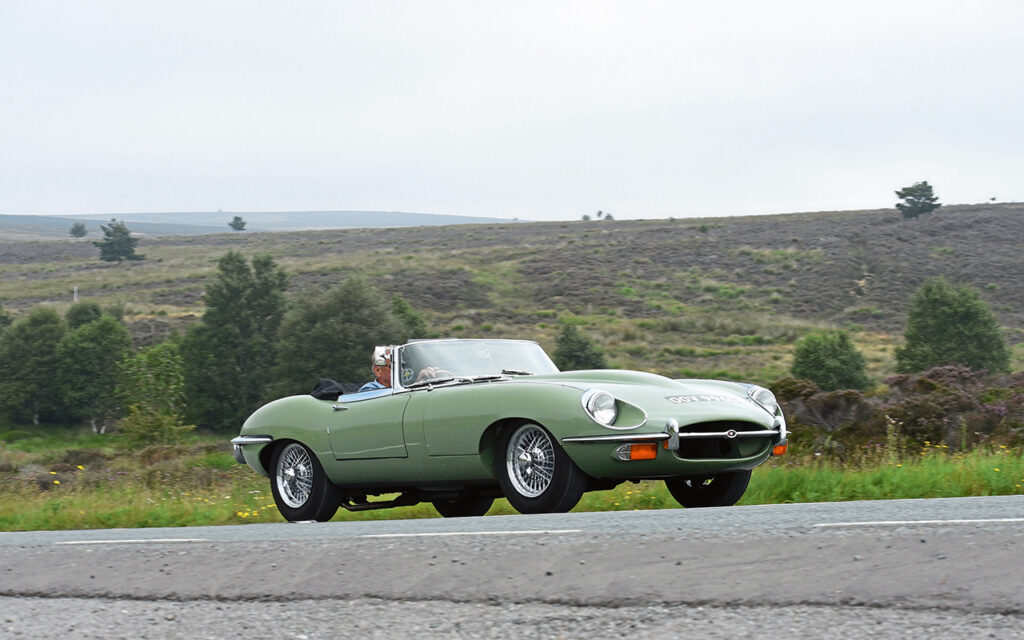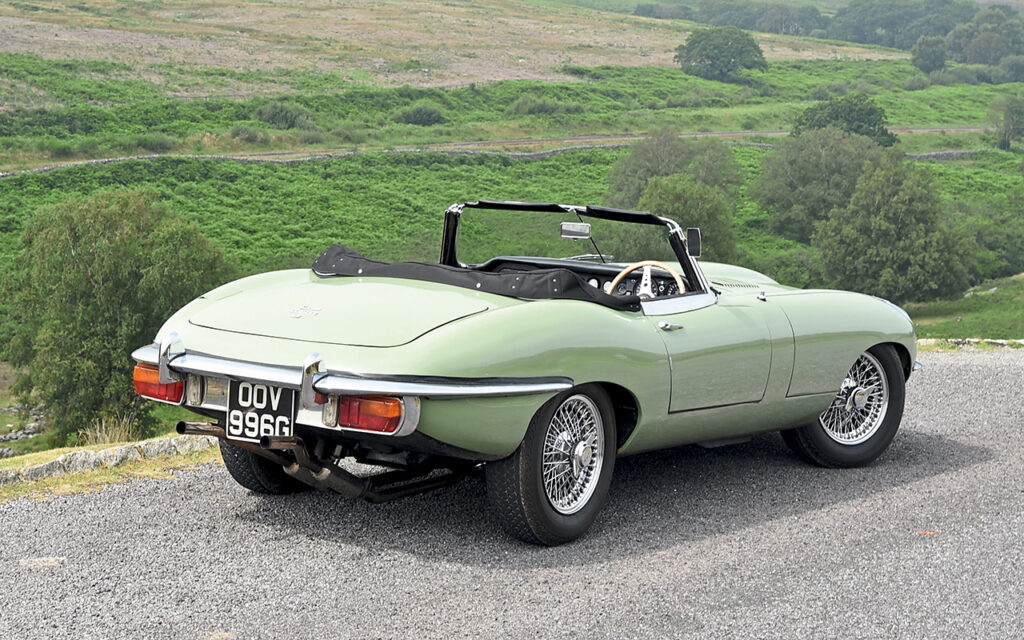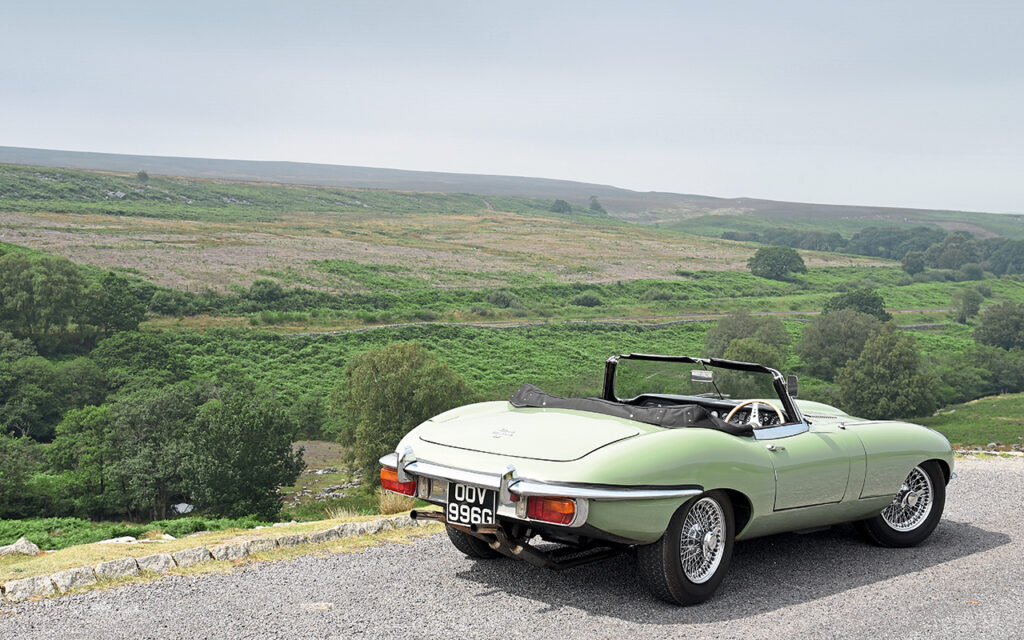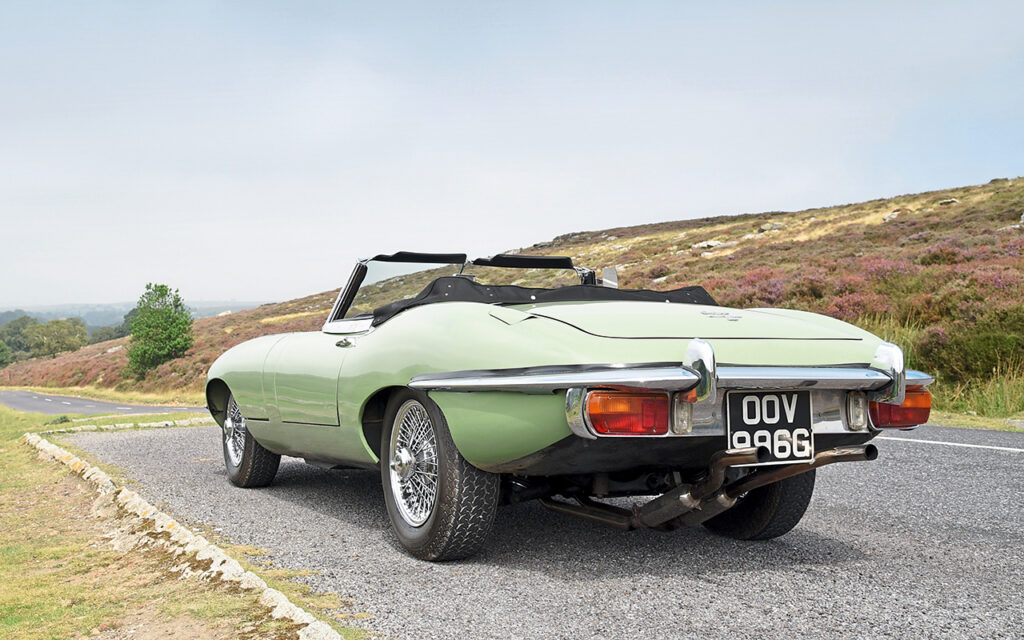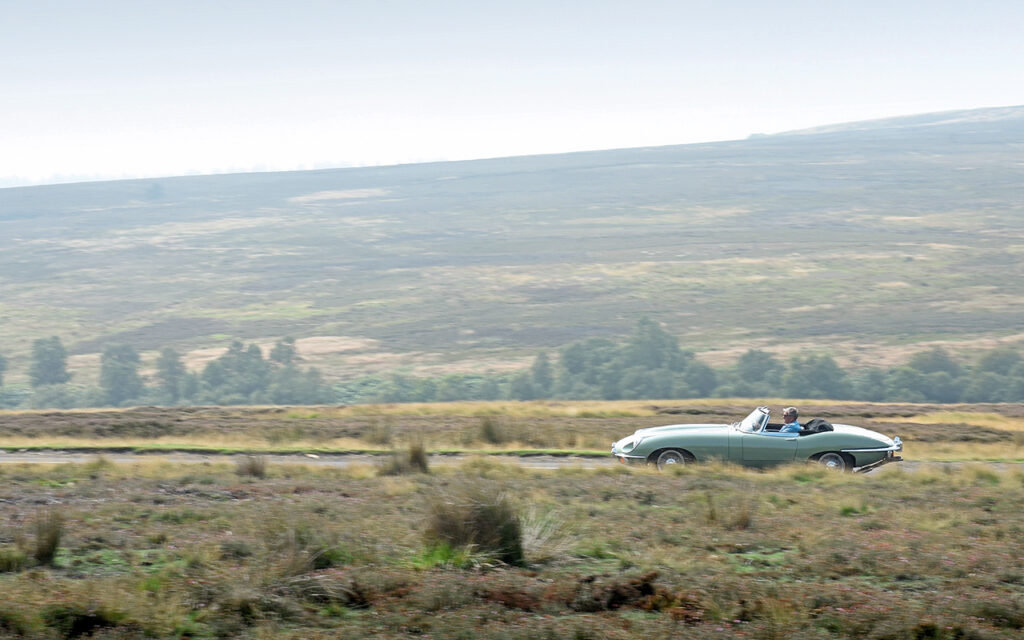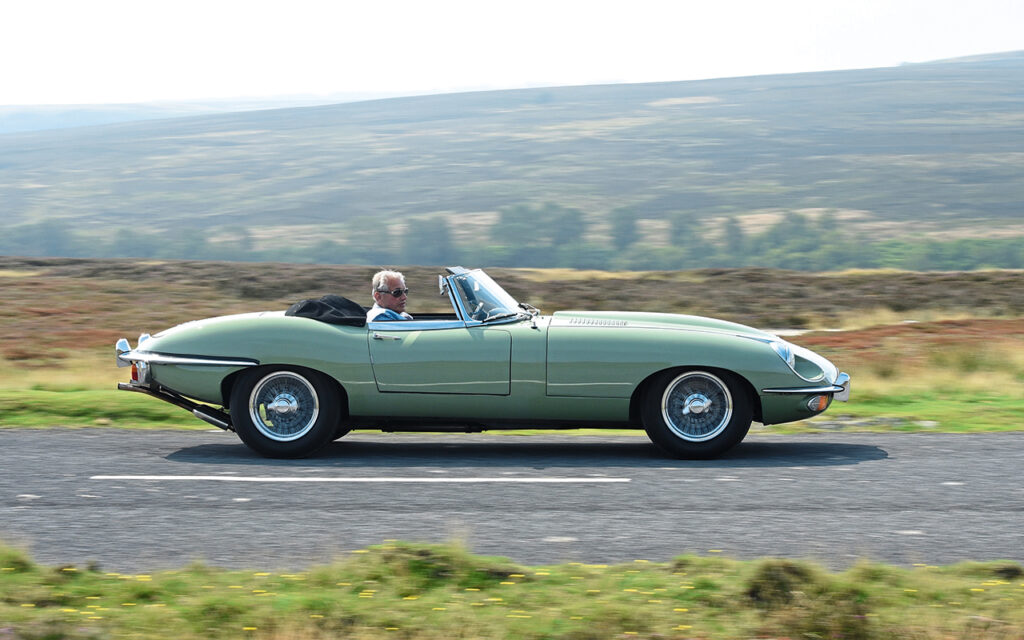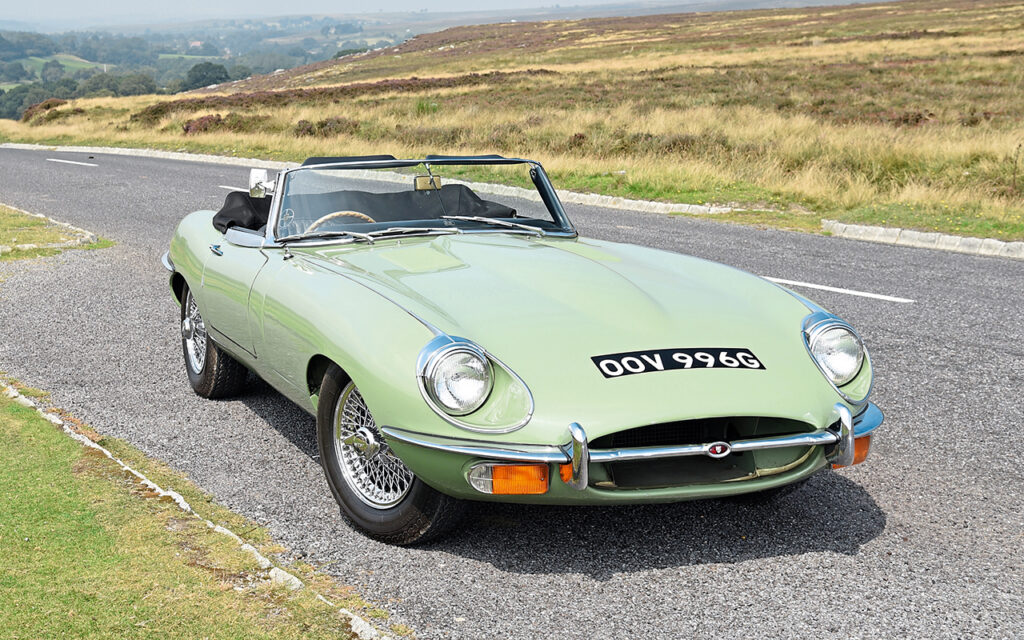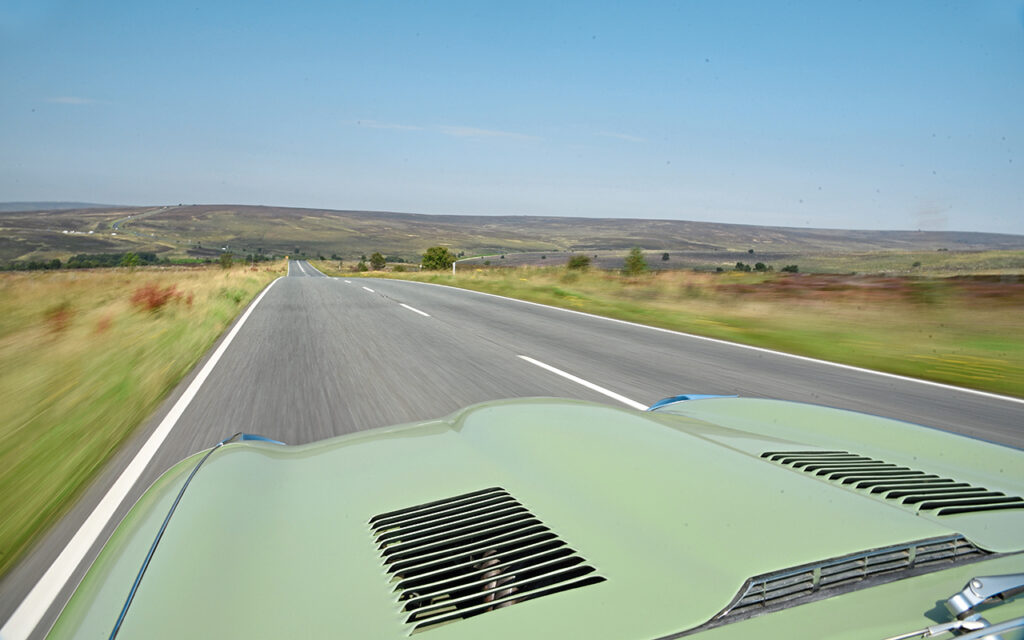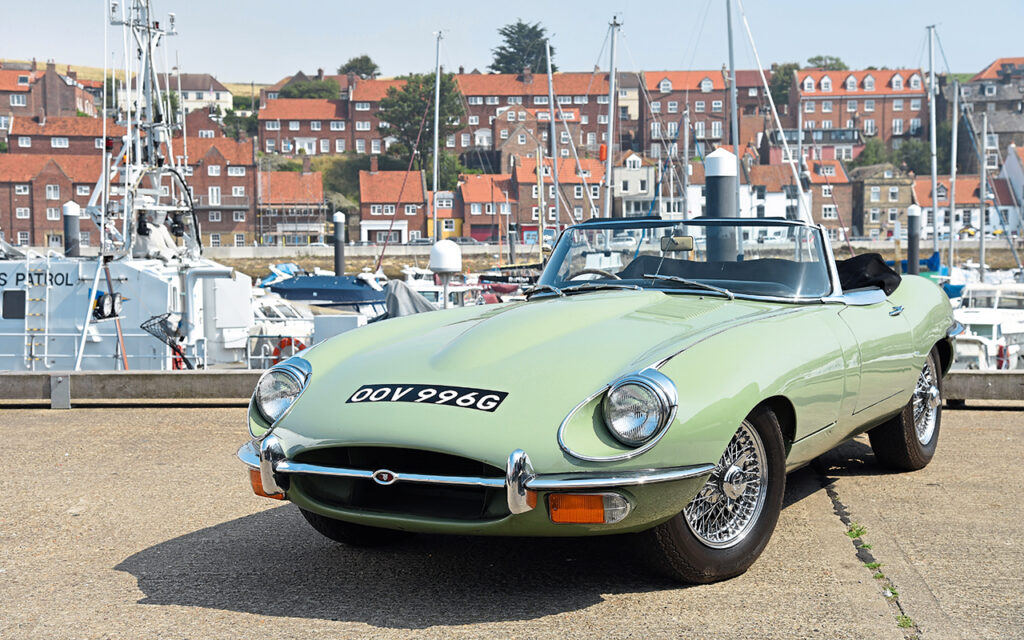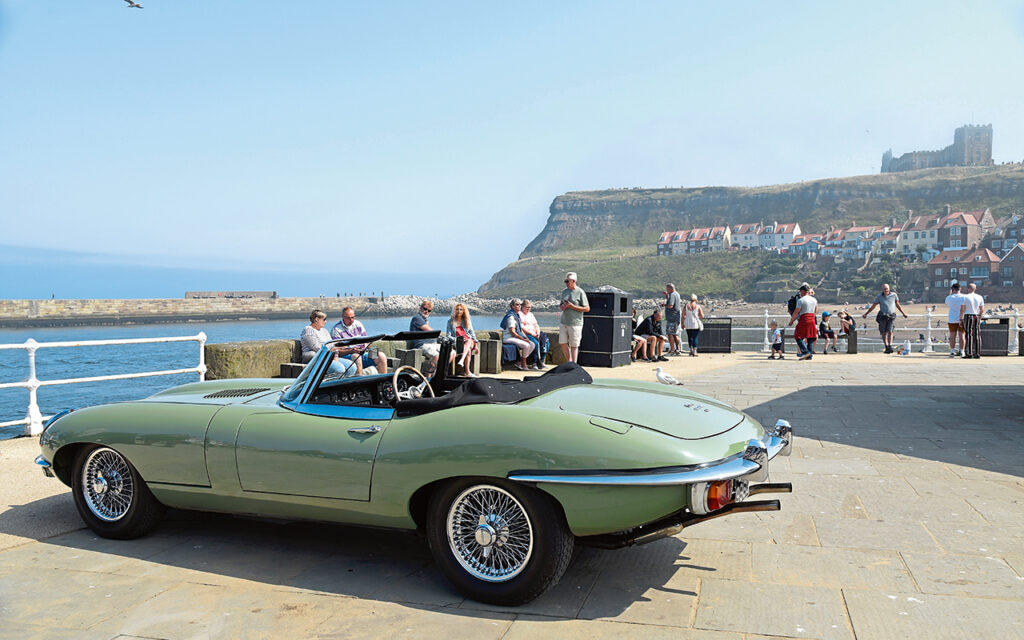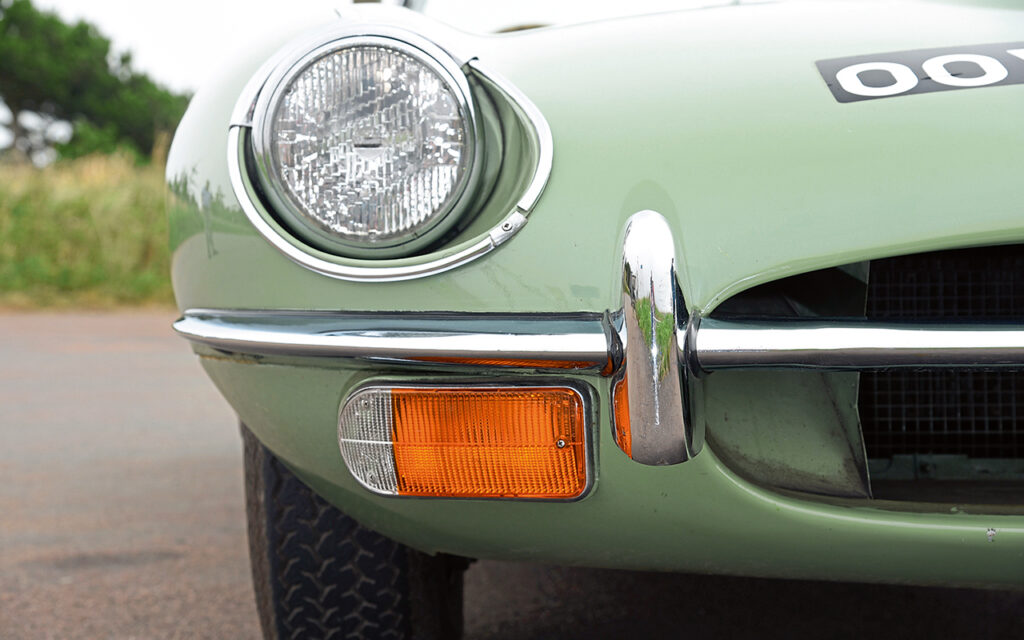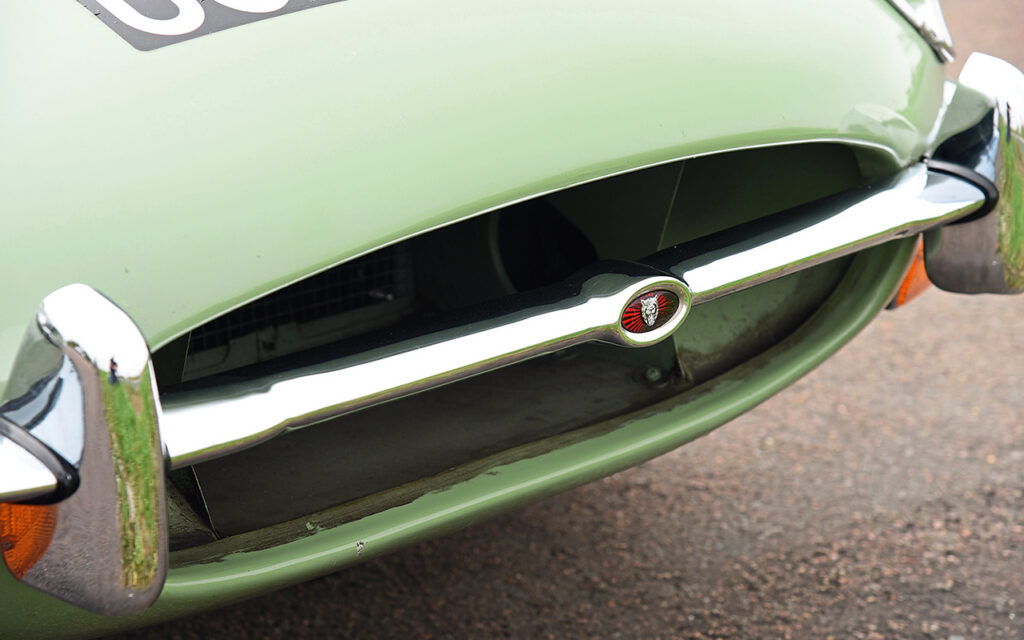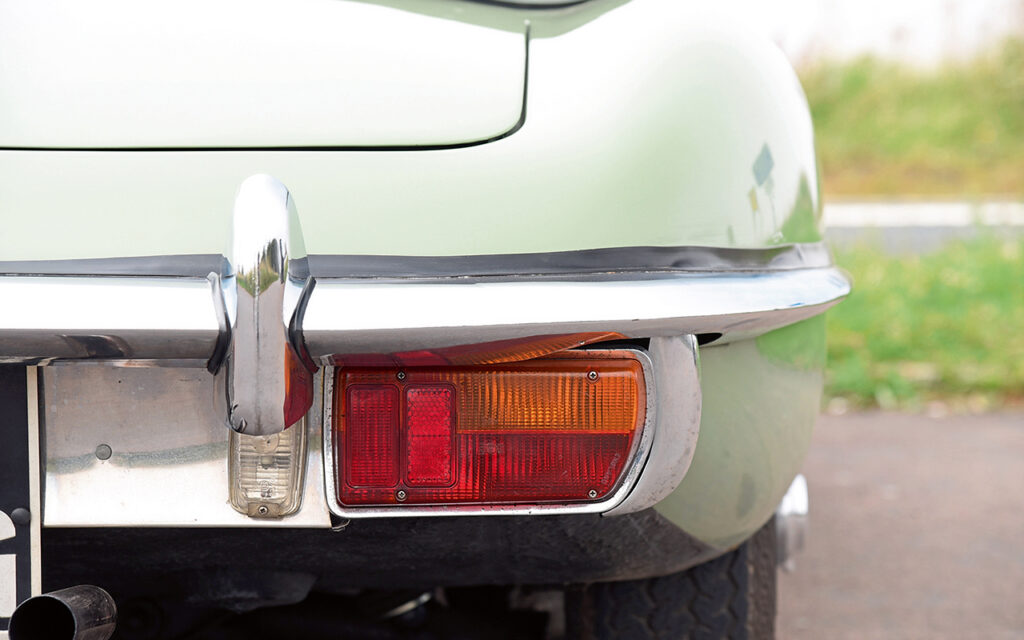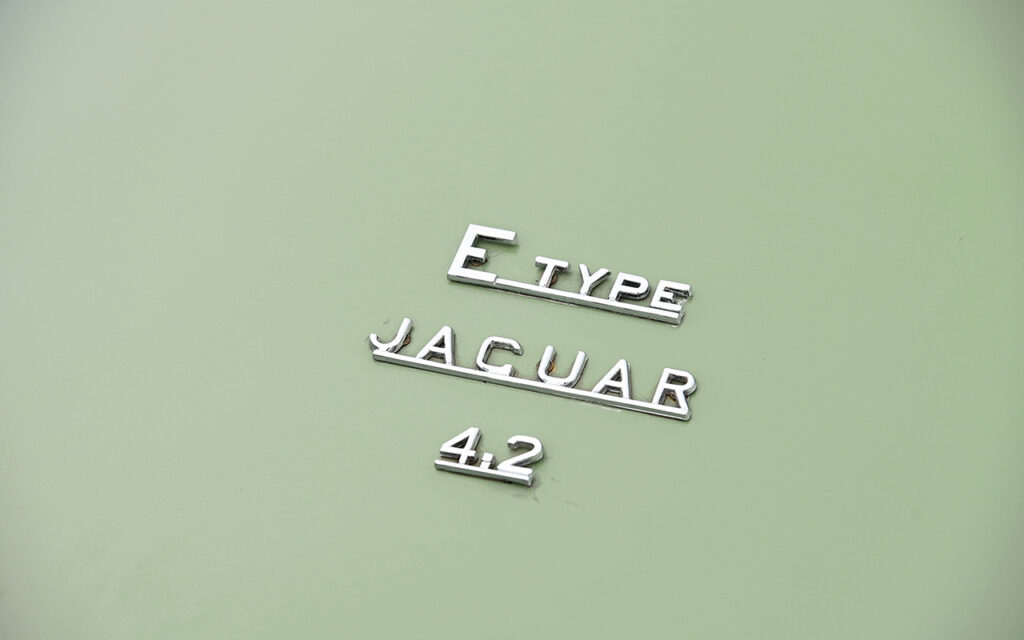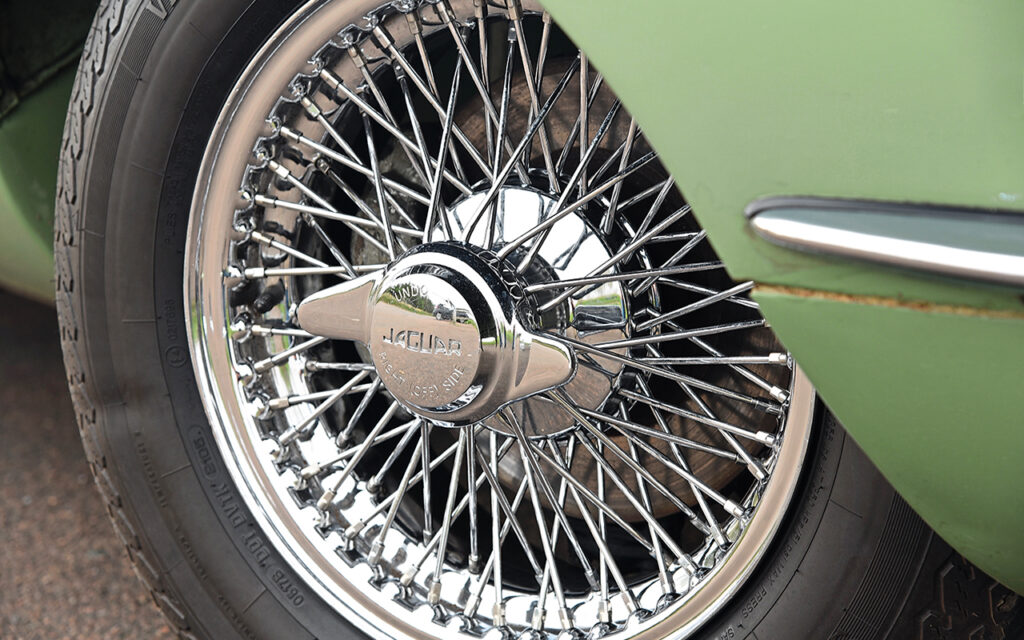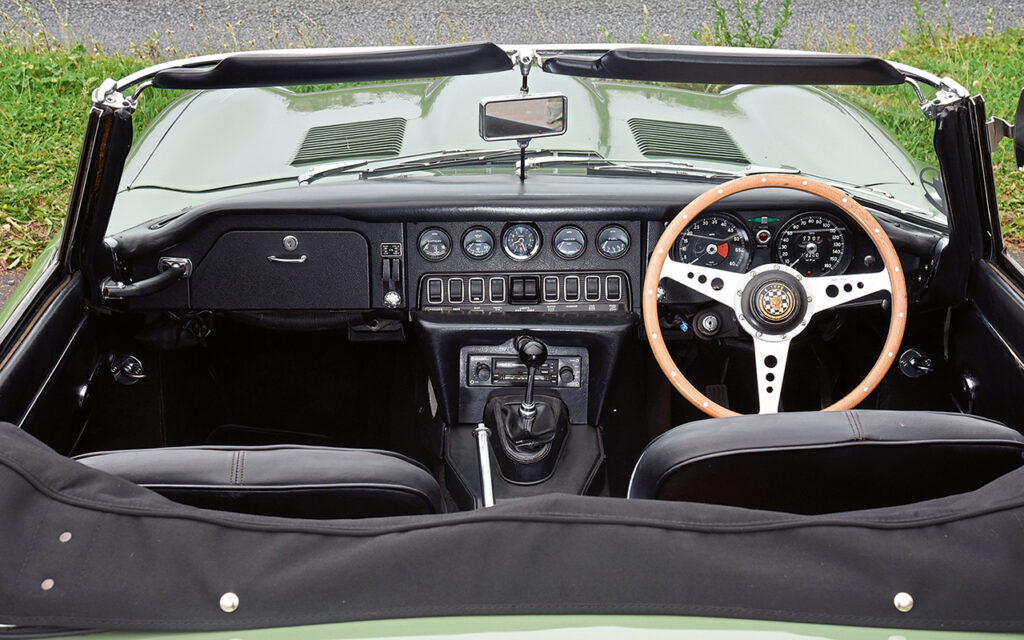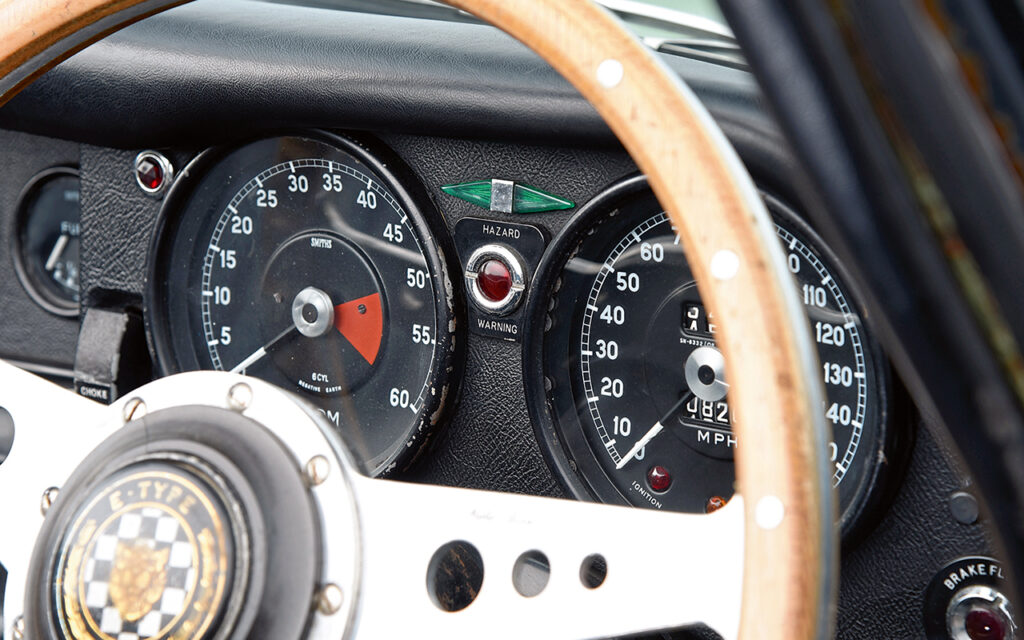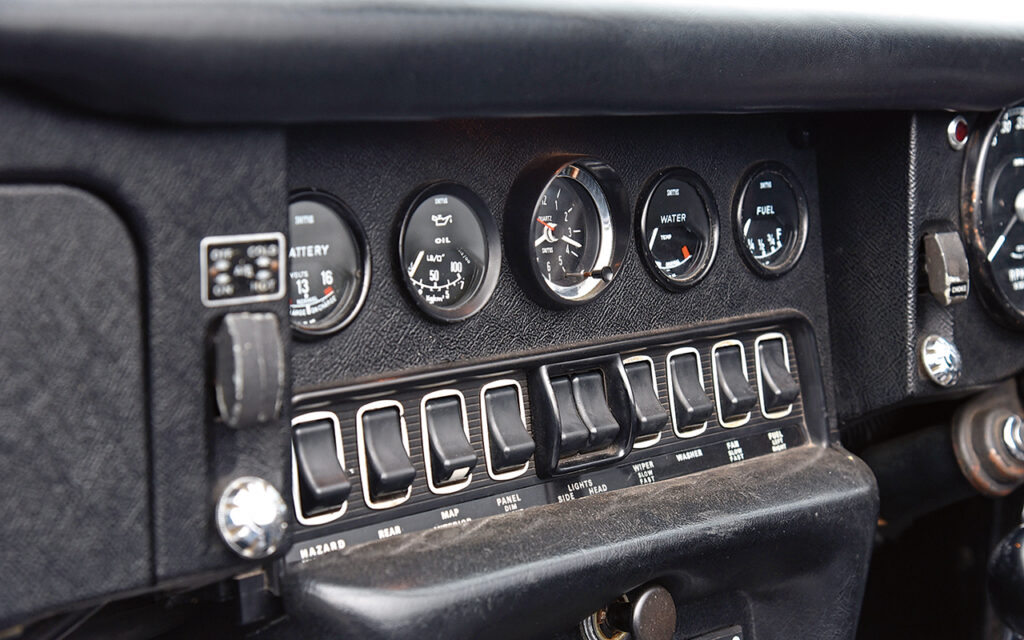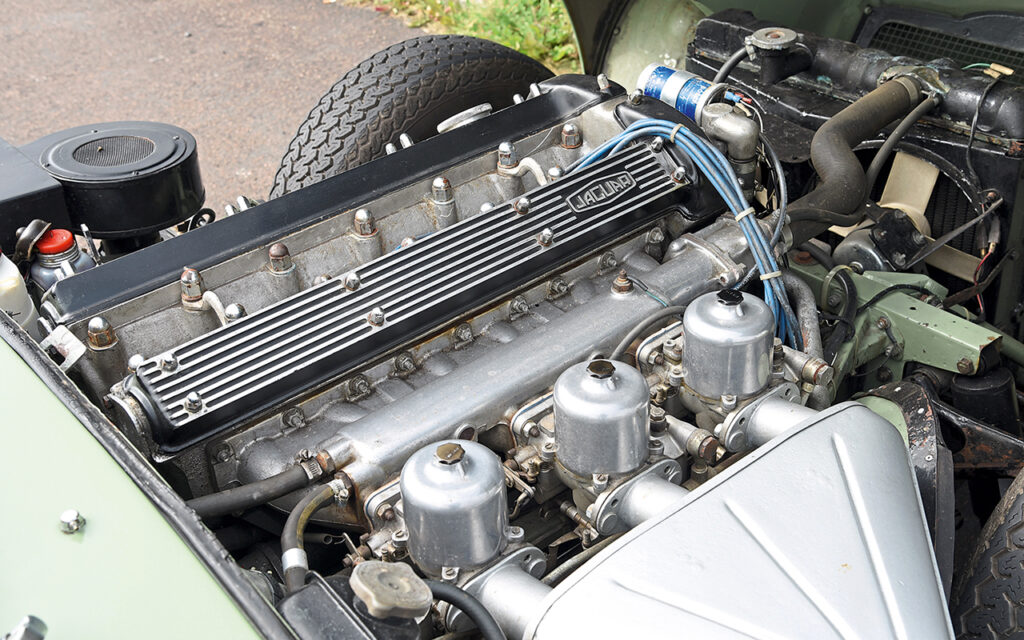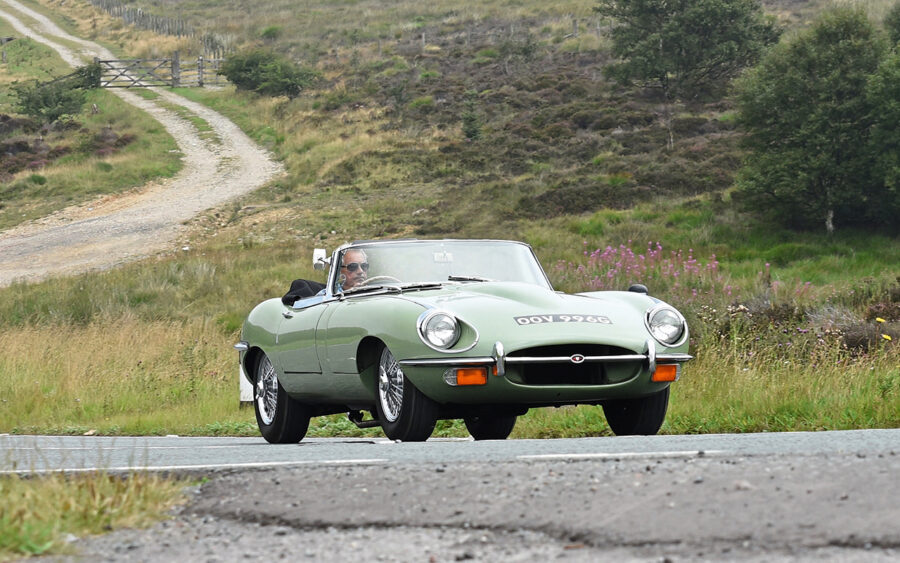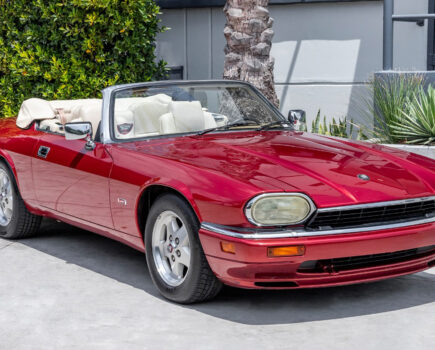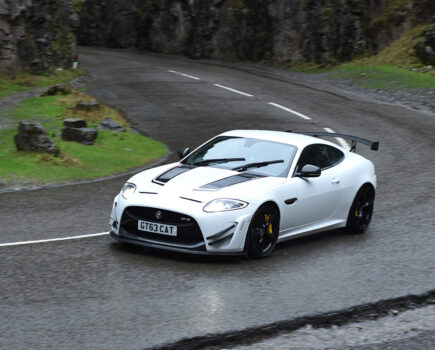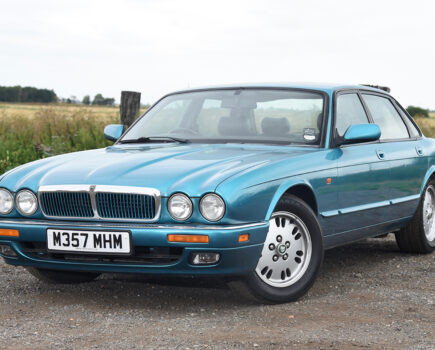What better test for the E-type Series 2 than a drive to the top of one of the UK’s prettiest locations, the Yorkshire Moors?
Words and images: Paul Walton
With the throttle as perfectly balanced as the steering, I exit the corner quickly and cleanly ready for the long straight that follows. The road ahead of me is as empty as the view and, as I floor the throttle, the 4.2-litre engine delivers its power in one raspy, snarling lump; I soon become a green blur against the purple bracken that blankets the moor.
It’s the long straights and fast, swooping corners such as these, together with its isolation, that makes the A169 one of the UK’s best driving roads. The 21-mile section that snakes over the top of the Yorkshire Moors between Pickering and Whitby is especially exciting. And how better to explore one of the UK’s best roads than in one of Jaguar’s best sports cars, an E-type Series 2 open two-seater?
The Series 2 is often overlooked in preference for the original and arguably purer Series 1, mainly due to the open headlights and ungainly ‘trailer board’ rear light clusters, but no one cares about such trivialities when I arrive in the centre of Pickering. “Nice car, mate,” says one passer-by. I sheepishly admit to it not being mine, quickly adding (before he calls the police) that I’ve just borrowed it from the Classic & Sportscar Centre down the road in Malton.
He’s right though. It is a nice car. Willow Green isn’t a common colour (a factory option between 1968 and 1972) and suits it well, highlighting the E-type Series 2’s voluptuous lines better than the darker, more traditional BRG.
Registered in November 1968, a month after the Series 2 debuted at the British Motor Show, this car is a very early example. And because it was originally restored way back in 1979, it has a delightful patina. Cosmetically, it’s not perfect, despite the more recent work, but it’s all the better for that. Together, the marks and imperfections say this is a car to be driven and enjoyed, not displayed. And that’s exactly what I intend to do.
As I slip behind the aftermarket – and beautiful – wood-rimmed Moto-Lita steering wheel, I am greeted by the sea of black vinyl and thick rocker switches that replaced the turned aluminium and delicate flicker switches of the very early models. It remains stylish, though – but, like a mod suit, social revolution or Beatlemania, it’s very much of its time.

The engine churns into life the moment I twist the key in the steering column-mounted ignition (sadly, the central console-positioned starter button was lost as part of the Series 1½ update in late 1967/early 1968). I leave Pickering’s pretty market square, the familiar twin-cam roar of the XK engine ricocheting off the buildings, and join the A169.
The 21-mile road goes back to the 18th century when three Acts of Parliament for the building of a turnpike (or toll road) between Whitby and Pickering were granted in 1784, 1785 and 1827. Incredibly, the road wasn’t tarred over until the Thirties, being laid with limestone until then. But, of course, back then the traffic would have been an occasional stagecoach, a farmer’s horse and cart, or perhaps a herd of sheep wanting a day out at the seaside.
With 6,500 vehicles a year travelling it today, it’s now table top smooth and perfect for a Sixties sports car. The first section cuts through lush and fertile Yorkshire countryside, where the fields are currently full of crops waiting for harvest.
A couple of miles down the road, where the A169 enters the North Yorkshire Moors National Park, it starts to climb, clearing the trees to give tremendous views over the moors. I look out to the Hole of Horcum, a spectacular amphitheatre 120m deep and a kilometre wide. Local legend has it that the hole was made by a mythological giant called Wade, who picked up a clod of earth and threw it at his wife, making both the hole and nearby Blakey Topping, where it landed. I wonder what Mrs Wade did in retaliation? Since Wade has a strong association with the sea (his boat is mentioned in Chaucer’s The Merchant’s Tale), I hope it was to hide his towel.
An even better view than of the moors, though, is the one through the screen and down the E-type’s famously long and curvaceous bonnet. As evocative as the exhaust note, it’s easy to understand why the E-type continues to fascinate us almost 60 years after the model’s debut. As one of the few cars (the original Mini being another) that are a part of British society and culture, everyone who saw the car during my trip knew exactly what it was.
My revere is broken by a series of corners, a long left-hander followed by a tight right. With the road also dipping quickly, they’re the Yorkshire equivalent of two of the most famous corners in the Monaco Grand Prix circuit, Grand Hotel Hairpin and Mirabeau Bas. There might be more trucks and a lot less glamour here, but this car makes the bends just as exciting. And despite the sharpness of the turn, the E-type slices through the corners with ease, the standard rack-and-pinion steering remaining surprisingly quick and precise for a 52-year-old sports car.
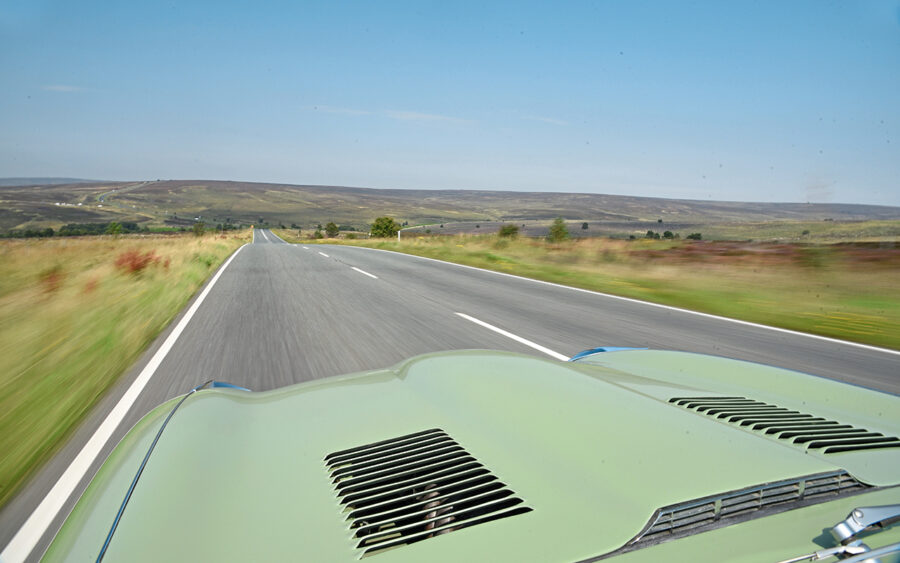
The Moors dominate the view out of the screen – much like the horizon from a plane – and I accelerate hard for a following straight, filling all of East Yorkshire with that raspy exhaust note. Combining the 265bhp from the 4.2-litre straight-six and the car’s minuscule 1,260kg weight (177kg less than a Series 3), performance is strong and punchy, the XK unit always eager to deliver its power. Acceleration is further aided by quick and accurate changes – the E-type Series 2 has an all-synchromesh four-speed ‘box. The gear’s snick into place with the certainty of a key twisting in a well-oiled padlock. Yet, because of the E-type’s iconic status and high values, it’s easy to overlook that the car is a proper, full-blooded sports car; take away its mythical status and that’s exactly what it is.
The road starts to ascend once again, meandering back and forth up to the top of Snod Hill, where, in the distance, is an enormous flat-headed pyramid, its eeriness heightened by a whisper of early morning mist. It looks a bit like an alien spacecraft (although I’m not sure why they would land here, miles from civilisation, or even a decent coffee), but this is actually the building – a radar base – housing RAF Fylingdales.
Originally the radar station of consisted of three 130ft spheres built in 1962/3 (universally nicknamed ‘Golfballs’) they were replaced in the early Nineties by the current 120ft building. RAF Fylingdales’ objective is to alert UK and US governments of an impending ballistic missile attack (the so-called four-minute warning during the Cold War), plus detect and track orbiting objects. I cross my fingers it doesn’t track the speed of green E-types on the nearby A169 at the same time.
After negotiating another tight corner, the road immediately climbs again, up a delightfully fast, sweeping curve followed by another fast, long straight that gives tremendous views over Goathland, home to the popular TV series Heartbeat, set in the Sixties about a village bobby. Fantasizing that I’m in an episode about a bank robber being chased by a Ford Anglia police car, I drop down a gear and gun the engine. The car picks up speed as cleanly and easily as a car a third of its age; if I was being chased by the Rozzers, I’d have left them behind long ago.
As I roar across the Yorkshire countryside, I can’t help but wonder why the E-type Series 2 isn’t as universally loved as the Series 1. Admittedly, the front and rear lights (changed to meet American legislation about bumper and headlight height) significantly impact the car’s looks, but the E-type’s unique aura, character and myth remain intact. It’s as good to drive as any Series 1, while improved cooling, better three-pot Girling brakes and more comfortable seats make the model easier to live with. Yet, at £90,000, this Willow Green E-type Series 2 is significantly cheaper than the several Series 1s that Classic & Sportscar Centre also have for sale.
Just as the surprisingly blue North Sea becomes visible over the Moors, the road starts to descend more quickly than it climbed. The Blue Bank is a steep, one-in-five (20 percent) gradient that’s famed for its accidents, the most famous being on 21 July 1929, when the brakes of a bus failed and it careered off the road at the bottom of the bank. At the point of the crash, the bus wrecked several beehives and the rescue effort was hampered by hundreds of angry insects.
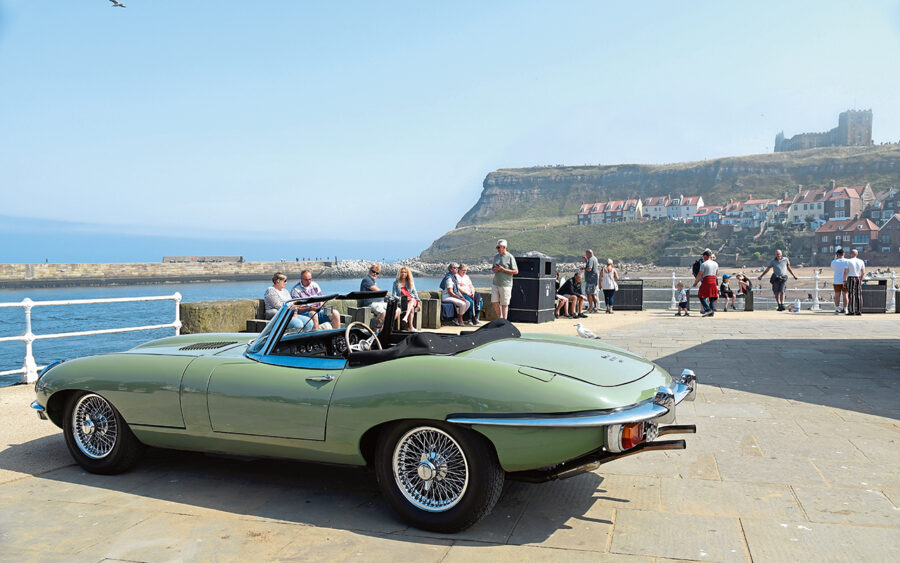
At the bottom of Blue Bank, where the road starts to flatten, is the village of Sleights, the name coming from the Old Norse for sletta, meaning flat land. The Norsemen might have conquered huge swathes of Europe, but they clearly weren’t very imaginative.
The junction with the A171, after I cross the River Esk, marks the end of the A169. It’s also where the first German bomber, a Heinkel He 111, was shot down onto British soil during World War Two, crashing to earth on 3 February 1940. To mark the location, a decade later two stone columns from a nearby bridge that was washed away during the flooding of July 1930 were positioned either side of the A171/A169 roundabout.
I manage to join the A171 in one piece and begin the final drive into Whitby, the beautiful harbour town famous for being the place British explorer James Cook started his career as an apprentice in 1747. The town’s other claim to fame is more macabre, being the location of Dracula’s arrival into England in Bram Stoker’s 1897 novel of the same name. Disguised as a large dog, he bounded up the 199 steps to the 11th century abbey that sits on a cliff overlooking Whitby. Still, I doubt he received as much attention as I do in the E-type. The popular seaside town is bustling with tourists on this sunny August afternoon, and the green car gets even more admiring glances than it did in Pickering.
After successfully navigating the busy roads – aided by the car’s light steering and notably sharp, but progressive, brakes – my journey ends overlooking Whitby’s pretty harbour, and the ruins of the abbey.
The drive from Pickering has been a little over 20 miles, a blink of an eye in an F-Type, but the E-type has transformed it into a much bigger and more memorable adventure than in any modern car thanks to its aural and visceral excitement.
The E-type Series 2 might always be overshadowed by the Series 1, but, thanks to its speed, handling, looks and comfort, I couldn’t think of a better car to take over the top.
